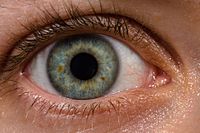
Indoor human activity recognition using high-dimensional sensors and deep neural networks
Sign Up to like & getrecommendations! Published in 2019 at "Neural Computing and Applications"
DOI: 10.1007/s00521-019-04408-1
Abstract: Many smart home applications rely on indoor human activity recognition. This challenge is currently primarily tackled by employing video camera sensors. However, the use of such sensors is characterized by fundamental technical deficiencies in an… read more here.
Keywords: indoor human; activity recognition; human activity; sensor ... See more keywords

UWB-Based Indoor Human Localization With Time-Delayed Data Using EFIR Filtering
Sign Up to like & getrecommendations! Published in 2017 at "IEEE Access"
DOI: 10.1109/access.2017.2743213
Abstract: An ultra wide band (UWB)-based time-delay indoor human localization scheme is proposed to provide indoor human localization with time-delay measurements. The human position is localized using the UWB-based distance data and the extended finite impulse… read more here.
Keywords: time delay; uwb based; localization; time ... See more keywords

Classification of Indoor Human Fall Events Using Deep Learning
Sign Up to like & getrecommendations! Published in 2021 at "Entropy"
DOI: 10.3390/e23030328
Abstract: Human fall identification can play a significant role in generating sensor based alarm systems, assisting physical therapists not only to reduce after fall effects but also to save human lives. Usually, elderly people suffer from… read more here.
Keywords: human fall; classification indoor; fall events; indoor human ... See more keywords

Improving the Performance and Explainability of Indoor Human Activity Recognition in the Internet of Things Environment
Sign Up to like & getrecommendations! Published in 2022 at "Symmetry"
DOI: 10.3390/sym14102022
Abstract: Traditional indoor human activity recognition (HAR) has been defined as a time-series data classification problem and requires feature extraction. The current indoor HAR systems still lack transparent, interpretable, and explainable approaches that can generate human-understandable… read more here.
Keywords: recognition; indoor human; human activity; internet things ... See more keywords